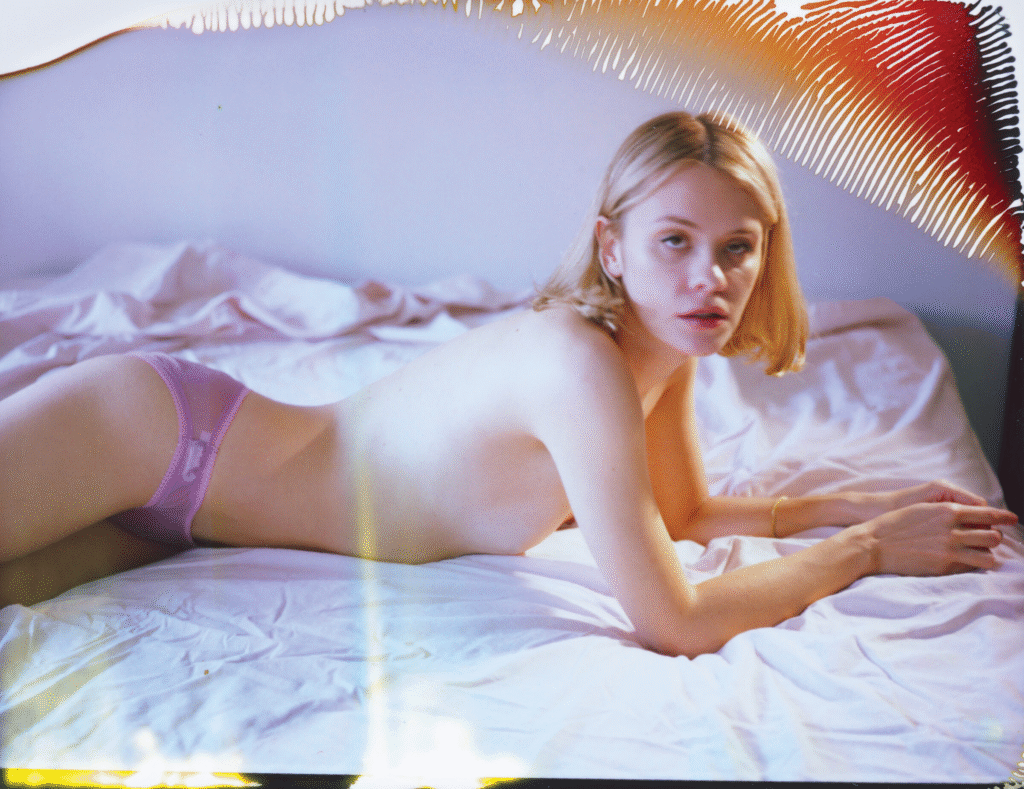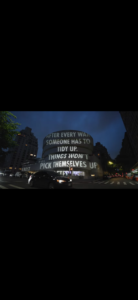The city of New York, ever restless, ever revealing, is once again the backdrop for Richard Kern’s most recent and reflexive project to date: New York Girls. Hosted by KALEIDOSCOPE and GUESS USA, this exhibition—accompanied by the launch of Album No. 01, a monographic issue dedicated to Kern—acts as a convergence point between the photographer’s enduring themes and the raw energy of a generation reared on exposure, irony, and autonomy.
This is not simply a show. It is a reckoning. A return to form and a meta-commentary on the form itself. Kern, the patron saint of ’80s East Village grime and ’90s alt-porn Americana, now stands in a paradoxical role—chronicler and critique, nostalgic and nihilist, renegade and archivist.
Richard Kern: From No Wave to Now
Richard Kern first emerged from the no-wave art scene of New York in the early 1980s, aligning himself with transgressive filmmakers like Nick Zedd and Lydia Lunch. His films—“The Right Side of My Brain” (1985) and “Fingered” (1986)—served as punk responses to the polished excesses of Hollywood, drenched in sex, violence, and a sense of existential exhaustion. But by the time he pivoted fully into photography in the ’90s, Kern had carved out a niche that was uniquely his: a mix of softcore eroticism and sociological documentation.
Kern’s camera has always been a site of contradiction. It fetishizes, yet humanizes. It intrudes, yet illuminates. The intimacy of his bedroom shoots—often featuring amateur models—posed uncomfortable questions about consent, control, and collaboration long before the digital age made those questions public and perpetual.
In the 2025 context, New York Girls serves less as a continuation of this trajectory than a mirror to it. As much as Kern frames his subjects, he is now being framed—by a generation raised on self-surveillance, identity politics, and a fervent desire to reconfigure the male gaze.
No Agency New York: The New Subjecthood
Crucial to this updated dynamic is the presence of No Agency New York, a model management collective founded on principles of autonomy, representation, and radical honesty. If Kern’s work once centered on the unseen and the unspoken, No Agency’s talent roster lives on the edge of hyper-visibility. These are models, yes, but also musicians, dancers, students, and activists—each performing identity rather than posing for it.
Their presence in New York Girls functions as an intentional subversion. Rather than being “shot” in the voyeuristic sense, the subjects here engage in a performative co-authorship. They know the camera. They control it. They manipulate it. The result is an uneasy dance of power, made legible by the editorial context of Album No. 01, which compiles images, interviews, and self-reflections into an artifact of visual anthropology.
GUESS USA and KALEIDOSCOPE: Commercialism with Teeth
That this project is backed by GUESS USA—a brand whose legacy is entangled in denim, desire, and Americana kitsch—adds another layer of tension. GUESS, once the house of Claudia Schiffer and Anna Nicole Smith, now finds itself underwriting a conceptual exploration of sexuality and gender in a post-#MeToo landscape.
Meanwhile, KALEIDOSCOPE continues its ascent as one of the most compelling tastemakers in the art-fashion ecosystem. Known for blurring the lines between magazine and exhibition platform, KALEIDOSCOPE’s involvement ensures that New York Girls resists reduction to mere nostalgia or prurient throwback. This is not a rerun—it’s a reinstallation of cultural software with all the bugs exposed.
Visual Language: From Soft Focus to Hyperreal
Aesthetically, the show and its accompanying print publication trace the evolution of Kern’s photographic style. Where early works relied on 35mm film grain, flash glare, and the suggestive tension of lo-fi nudity, the 2025 series embraces high resolution, ambient lighting, and deliberate framing.
Yet the iconography remains: cluttered beds, cluttered minds; half-open blinds, half-formed personas; tattoos, piercings, plastic furniture, NYC grime. The photos pulse with the contradiction of their time—freedom that feels like exposure, sexuality that reads as statement, comfort in the discomfort.
In one image, a model lounges on a radiator in thrifted heels and a vintage Yankees tee, cigarette burning. In another, a pair of eyes glare defiantly into the camera through the broken blinds of a Bushwick walk-up. The camera neither flatters nor exploits—it records.
Album No. 01: Documenting a Generation of Self-Aware Subjects
The publication Album No. 01 functions as more than a zine or companion book—it is the philosophical heart of the project. Within its pages, the reader finds not just Kern’s photos but essays from cultural critics, firsthand testimonials from the models, text messages, diary fragments, and annotations that speak to the performative labor behind the pose.
No longer anonymous, the girls become narrators. Their voices are threaded through the imagery like power lines—sometimes flickering, sometimes humming, always charged.
The decision to foreground these perspectives—rather than erase them in favor of the “pure image”—signals a profound shift. In 2025, the subject is no longer submissive to the lens. The subject is platformed, documented, and heard.
Cultural Legacy: Looking Back Without Looking Away
Richard Kern’s New York Girls doesn’t seek to tidy up his legacy—it complicates it. That’s the point. At a moment when artists are being reevaluated for their provocations, missteps, and methodologies, Kern’s choice to collaborate with No Agency and allow his own visual authority to be contested feels both brave and necessary.
It acknowledges that voyeurism is no longer passive. It’s participatory. That to document youth is not to immortalize it, but to admit its volatility.
The exhibition also surfaces a greater conversation about fashion’s relationship to art and agency. Where once the fashion image was presumed fantasy, it now carries the weight of implication. To look is to implicate. To pose is to protest. To photograph is to interrogate.
A New Kind of Looking
New York Girls is not about nostalgia for the sleaze of old New York. It’s about looking into the mirror of now—and recognizing how deeply fractured, performative, and power-driven that “now” truly is.
Through the lens of Kern and the voices of No Agency New York, this project forces a confrontation between aesthetics and ethics, between intention and interpretation. In doing so, it offers no easy answers. Just a series of images, ideas, and identities, flickering like neon outside a Lower East Side window.
This is America, 2025. And this is what looking looks like.
No comments yet.








